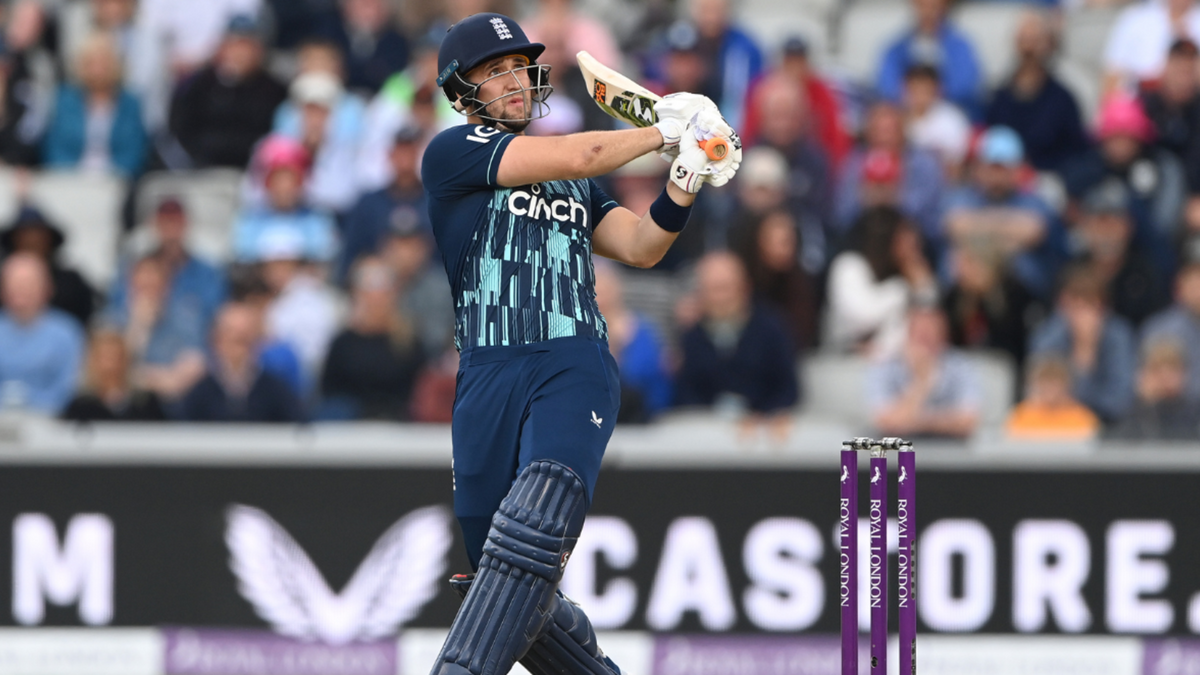
Liam Livingstone hasn’t played an ODI for over a year. So far, the promise of what he could offer has outweighed his returns in the format, but the World Cup could be his moment to deliver on the international stage, writes Katya Witney.
Subscribe to the Wisden Cricket YouTube channel for post-match analysis, player interviews, and much more.
Type into Twitter, ‘Liam Livingstone six’. You’ll find a series of clips of different impossibly huge sixes hit by Livingstone in various franchise leagues, intermingled with him in an England shirt. That capability to hit further than anyone else in the game is what’s made him one of the hottest commodities in the global franchise markets. It’s also made him an integral part of England’s white-ball sides over the last two years.
Livingstone took four innings in a T20I shirt before he showed the devastation he could wreak. The hundred he hit against Pakistan, still the fastest ever for England, set the ball rolling. Considering the other huge hitters England have in their ranks, to score the fastest of them all on your fourth try is a ridiculous achievement. But that’s what he’s been chasing ever since.
Livingstone doesn’t have a single fifty in 29 T20I appearances. That’s indicative of the role he’s occupied. While he’s come in at every position from 3–7 in England’s order, he’s constantly pushed down to come in at the back end of the innings to hit a flurry of sixes, rather than bat through. In the context of England’s side, that works. They have a solid opening partnership and all bases covered in the middle order. Given how hard Livingstone goes from ball one, the threat he poses with a few overs left of an innings is huge.
In ODIs, however, it’s not that simple. Before Eoin Morgan’s retirement, Livingstone struggled to find a regular place in the side. He relied on England’s first picks being rested to get into the XI. An unbeaten 22-ball 66 in the record-breaking 498 against the Netherlands and Morgan’s retirement on that tour changed things. A spot opened up in the middle order, and Jos Buttler shunted up a position to open a place for Livingstone at six.
But what Buttler offers coming in at six is different from what Livingstone does. Buttler is a freakish ODI player, just as capable of opening as he is coming in down the order. His role is to be England’s get-out-of-jail-free card in every situation. That’s not what Livingstone offers. In continuing to pick him, England cannot expect the same kind of consistency. He won’t be that dependable force to get them over the line in a tight chase.
Since that Netherlands series, Livingstone has played six ODIs, with a high score of 38. He was injured out of their series’ in South Africa and Bangladesh earlier this year. So far, the promise of what he can do is greater than what he has done.
Nevertheless, he was chosen over both Will Jacks and Harry Brook in England’s World Cup squad. His bowling will have come into consideration – the ability to turn the ball both ways and lengthen the bowling lineup as well as the batting is what England wanted – especially with Ben Stokes unable to bowl. He also brings all the swagger on and confidence required to come into a huge tournament with little recent practice. With Livingstone in, there are several ways they could balance their side. The most likely is for Buttler to come in at five, leaving Moeen Ali and Livingstone interchangeable at six and seven. It’s a healthy-looking lower order.
Each white-ball format takes a backseat when the other’s World Cup looms closer. In the build-up to the T20 World Cup, Livingstone made himself indispensable in England’s lineup. He doesn’t have the same luxury of time to do so this time around. But, the World Cup is the biggest stage of them all, and if England are to defend their title, Livingstone needs to deliver.








